- Home
- Robert Silverberg
Earth Is The Strangest Planet
Earth Is The Strangest Planet Read online
Table of Contents
Earth Is The Strangest Planet
ACKNOWLEDGMENTS
INTRODUCTION Robert Silverberg
AND LO! THE BIRD Nelson Bond
NARROW VALLEY R. A. Lafferty
EMPIRE OF THE ANTS H. G.Wells
I
II
III
IV
THS NIGHT THAT ALL TIME BROKE OUT Brian W. Aldiss
DAVY JONES’ AMBASSADOR Raymond Z. Gallun
I
II
III
IV
V
VI
VII
ROCK DIVER Harry Harrison
OR ALL THE SEAS WITH OYSTERS Avram Davidson
THE CHRYSALIS P. Schuyler Miller
THE ROTIFERS Robert Abernathy
WHEN WE WENT TO SEE THE END OF THE WORLD Robert Silverberg
Earth Is The Strangest Planet
Ten Stories of Science Fiction
edited by
Robert Silverberg
THOMAS NELSON INC., PUBLISHERS
Nashville New York
No character in this book is intended to represent any actual person; all the incidents of the stories are entirely fictional in nature.
Copyright © 1977 by Robert Silverberg
All rights reserved under International and Pan-American Conventions. Published in Nashville, Tennessee, by Thomas Nelson Inc., Publishers, and simultaneously in Don Mills, Ontario, by Thomas Nelson & Sons (Canada) Limited. Manufactured in the United States of America.
First edition
Library of Congress Cataloging in Publication Data Main entry under title:
1. Science fiction, American 2. Science fiction, English I. Silverberg, Robert.
PZ1.E125 [PS648.S3] 813’.0876 76-55728
ISBN 0-8407-6528-2
ACKNOWLEDGMENTS
And Lo! The Bird by Nelson Bond, copyright 1950, 1954 by Nelson Bond. Reprinted by permission of the author.
Narrow Valley, by R. A. Lafferty, copyright © 1966 by Mercury Press. Reprinted by permission of the author and his agent, Virginia Kidd.
The Night That All Time Broke Out, by Brian W. Aldiss, copyright © 1967 by Harlan Ellison. Reprinted by permission of the author and the Scott Meredith Literary Agency, Inc.
Davy Jones’ Ambassador, by Raymond Z. Gallun, copyright 1935 by Street & Smith Publications, Inc. Reprinted by permission of the author.
Rock Diver, by Harry Harrison, copyright 1950 by Harry Harrison. Reprinted by permission of the author and his agent, Robert P. Mills, Ltd.
Or All the Seas With Oysters, by Avram Davidson, copyright © 1958 by Galaxy Publishing Corporation. Reprinted by permission of the author.
The Chrysalis, by P. Schuyler Miller, copyright 1936 by Street & Smith Publications, Inc., copyright © 1964 (renewed) by The Conde Nast Publications, Inc. Reprinted by permission of Reed Smith Shaw & McClay, representatives for the author’s estate.
The Rotifers, by Robert Abernathy, copyright 1953 by Quinn Publishing Co., Inc. Reprinted by permission of the author.
When We Went to See the End of the World, by Robert Silver-berg, copyright © 1972 by Terry Carr. Reprinted by permission of the author.
INTRODUCTION
Robert Silverberg
It is not hard to find wonders in science fiction, but mostly they are found in stories set in remote galaxies or in the vast reaches of the future. The library shelves are crowded with books with titles like EXPLORERS OF SPACE or VOYAGERS IN TIME or WORLDS OF MAYBE—to mention just a few for which I happen to be responsible.
But there are more real wonders in a puddle of muddy water than in a million imaginary galaxies, and the book you now hold in your hands is intended to demonstrate that. Here are ten science-fiction stories, all of them set on Earth in the more-or-less present day—and they are full of such miracles and splendors as will satisfy the most jaded seeker after novelty. We meet the dwellers in the puddle, yes, and those in the depths of the ocean and the bowels of the planet, we are menaced by sinister coat hangers and we step through mysterious folds in the space-time continuum, we see dinosaurs run amok in suburban England and bizarre beings emerge from archaeological digs, and never once do we leave the planet of our birth; never once do we journey into distant eras. The scope of science fiction is so immense that we can serve up all this dazzlement without ever departing very far from the here and now. Or perhaps the credit should go, not to science fiction, but to Earth itself, our inexhaustible, always surprising home world—which may very well be the strangest planet in all the universe, our prosaic little planet, the planet that gave the universe the stegosaurus, the kangaroo, the Venus flytrap, the pelican, the turtle, the lobster, and a billion other miracles, not the least of them the human imagination.
—Robert Silverberg
AND LO! THE BIRD
Nelson Bond
Nelson Bond has had a long and distinguished career as a writer—beginning with the science-fiction magazines of the late 1930’s, moving on to such highly regarded all-fiction publications as Argosy and Blue Book, then to television in the days of Studio One, Philco Playhouse, Playhouse 90, and the other great dramatic shows of the 1950’s. These days he lives down Virginia way, doing little writing but operating a thriving rare-book business. His stories keep coming back into print, though, and little wonder about that, for they are lively, crisply told, and imaginative—as, for example, this chilling fantasy, monumentally improbable and yet somehow not at all implausible. In the long roster of end-of-the-world stories, this one stands out as one of the strangest.
* * *
The Bird of Time has but a little way To fly—and Lo! the Bird is on the wing.
—Edward FitzGerald, Rubaiyat of Omar Kayyam—
* * *
I don’t know why I’m bothering to write this. It’s undoubtedly the most useless bit of writing I’ve ever done in a career devoted to defacing reams of clean copy paper with torrents of fatuous words. But I’ve got to do something to keep my mind occupied, and since I was in this from the beginning, I might as well set it down as I remember it.
Of course, my record of those first days makes no difference now. But, then, nothing matters much now. Perhaps nothing ever really mattered much, actually. I don’t know. I’m not very sure about anything any more. Except that this is an absurdly unimportant story for me to be writing. And that somehow I must do it, nonetheless… .
I’ve said I was in this from the beginning. That’s a laugh. How long ago it really started is any man’s guess. It depends on how you choose to measure time. Some four thousand years ago, if you’re a fundamentalist adherent to Archbishop Ussher’s chronology. Perhaps three thousand million years ago, if you have that which until a few short weeks ago we used to speak of vaingloriously as “a scientific mind.”
I don’t know the truth of the matter, nor does anyone else, but so far as I’m concerned it started about a month ago. On the night our City Editor, Smitty, wigwagged me to his desk and grunted a query at me.
“Do you know anything about astronomy?” he asked a bit petulantly.
“Sure,” I told him. “Mercury, Venus, Earth, Mars, Jupiter, Saturn, Uranus, Neptune, and something-or-other.”
“How?” frowned Smitty.
“And Pluto,” I remembered. “The solar family. The planets in the order of their distance from the sun. I had a semester of star-gazing at school. Some of it rubbed off.”
“Good,” said the C.E. “You’ve just won yourself an assignment. Do you know Dr. Abramson?”
“I know who he is. The big wheel on the university observatory staff.”
“That’s right. Well, go see him. He
’s got something big —he says,” appended Smitty.
“Cab?” I asked hopefully.
“Bus.”
“Astronomically speaking,” I suggested, “a big story could mean a lot of things. A comet striking earth. The heat of the sun failing and letting us all freeze to death.”
“Things are tough all over,” shrugged Smitty. “The suburban buses run every twenty minutes until midnight.”
“On the other hand,” I mused, “he may have run into some meteorological disturbance that means atomic experiment. If the Reds are playing around with an H-bomb—”
“Okay, a cab,” sighed Smitty. “Get going.”
Abramson was a small, slim, sallow man with shadowed eyes. He shook my hand and motioned me into a chair across the yellow oak desk from him, adjusted a gooseneck lamp so it would shine in neither of our faces, then steepled lean white fingers. He said, “It was good of you to come so promptly, Mr.-”
“Flaherty,” I told him.
“Well, Flaherty, it’s like this. In our profession it isn’t customary to release stories through the press. As a rule, we publish our observations in technical journals comprehensible, for the most part, only to specialists. But this time such treatment does not seem adequate. It might not be fast enough. I’ve seen something in the heavens—and I don’t like it.”
I made hen scratches on a fold of copy paper.
“This thing you saw? A new comet, maybe?”
“I’m not sure that I know,” said Abramson, “and I’m even less sure I want to know. But whatever it is, it’s unusual enough and, I suspect, important enough to warrant the step I’m taking. In order to get the swiftest possible confirmation of my observations, and of my fears, I feel I must use the public press to tell my message.”
“All the news that’s fit to print,” I said, “and a lot that isn’t; that’s our stock in trade. What is it you’ve seen?”
He stared at me somberly for a long minute. Then:
“A bird,” he said.
I glanced at him in swift surprise. “A bird?” I felt like smiling, but the look in his eyes did not encourage mirth.
“A bird,” he repeated. “Far in the depths of space. The telescope was directed toward Pluto, farthermost planet of our solar system. A body almost four thousand millions of miles from Earth.
“And at that distance” —he spoke with a painful deliberation— “at that incredible distance, I saw a bird!”
Maybe he read the disbelief in my eyes. Anyway, he opened the top drawer of his desk, drew forth a sheaf of 8-by-10 glossies, and laid them before me.
“Here,” he said. “See for yourself.”
The first photograph meant little to me. It showed a field of star-emblazoned space—the typical sort of picture you find in any astronomy textbook. But on it one square was outlined in white pencil. The second photo was an enlargement of this square, showing in magnified detail the outlined area. The field was larger, brighter; a myriad of glowing stars diffused a silvery radiance over the entire plate. Against this nebulosity stood out in stark relief the firm, jet silhouette of a gigantic birdlike creature in full flight.
I ventured an uncertain attempt at rationalization. I said, “Interesting. But, Dr. Abramson, many dark spots have been photographed in space. The Coalsack, for instance. And the black nebula in—”
“True,” he acknowledged. “But if you will look at the next exposure?”
I turned to the third photograph, and for the first time felt the breath of that thin, cold, helpless dread which in the weeks ahead was to come to dwell with me. It depicted an overlapping portion of that field surveyed in the second print. But the dark, occulting silhouette had changed. That which was limned against the background of the stars was still the outline of a bird—but the shape had changed. A wing which had been lifted now was dropped; the postures of neck and head and bill were subtly but definitely altered.
“This photograph,” said Abramson in a dry, emotionless voice, “was taken five minutes after the first one. Disregarding the changed appearance of the—the image— and considering only the object’s relative position in space, as indicated by the parallax, to have shifted its position to such an extent in so short a time indicates that the thing casting that image must have been traveling at a velocity of approximately one hundred thousand miles per minute.”
“What!” I exclaimed. “But that’s impossible. Nothing on earth can travel at such a speed.”
“Nothing on earth,” agreed Abramson. “But cosmic bodies can—and do. And for all that it has the semblance of a living creature, this thing—whatever it is—is a cosmic body.
“And that,” he continued fretfully, “is why I asked you to come out here. That is the story I want you to write. That is why no moment must be wasted.”
I said, “I can write the story, but it will never be believed.”
“Perhaps not—at first. Nevertheless, it must be released. The public may laugh if it chooses. Other observatories will check my discovery, verify my conclusions. And that is the important thing. No matter what it may lead to, what it means, we must learn the truth. The world has a right to know the threat confronting it.”
“Threat? You think there is a threat?”
He nodded slowly, gravely.
“Yes, Flaherty. I know there is. There is a thing these pictures may not tell you, but that will be recognized instantly by any trained mathematician.
“That thing—bird, beast, machine, or whatever it may be—travels in a computable path. And the direction of its flight is—toward our sun!”
My interview threw Smitty for a loss. He read copy swiftly, scowled, studied the pix, and read the story again, this time more slowly and with furrows congealing on his forehead. Then he stalked over to my desk.
“Flaherty,” he complained in a tone of outraged indignation, “what is all this? What the hell is it, I mean?”
“A story,” I told him. “The story you sent me out to get. Abramson’s story.”
“I know that. But—a bird! What the hell kind of a story is that?”
I shrugged. “Frankly, I don’t know. Dr. Abramson seemed to think it’s important. Maybe,” I suggested, “he’s got rocs in his head?”
It was too subtle for Smitty. He smudged the bridge of his nose with a copy pencil and muttered something uncomplimentary to astronomers in general and Abramson in particular.
“I suppose we’ve got to print it,” he decided. “But we don’t have to make damned fools of ourselves. Lighten this up. If we must run it, we’ll play it for laughs.”
So that’s what we did. We carried it on an inside page, complete with Abramson’s pictures, as a special feature, gently humorous in tone. We didn’t openly poke fun at Abramson, of course. He was, after all, the observatory chief of staff. But we soft-pedaled the science angle. I rewrote the yarn in the style we generally use for flying saucer reports and sea-serpent stories.
Which was, of course, a terrific boner. But in all fairness to Smitty, how was he to know this was the story to end all stories? The biggest story of his or any newspaperman’s career?
Think back to the first time you read about it, and be honest. Did you guess, then, that it was gospel truth?
We soon discovered our mistake. Reaction to the yarn was swift and startling. The Banner had been on the streets less than an hour when the phones began to ring.
That, in itself, was not unusual. Any out-of-the-ordinary story brings its quota of cranks crawling forth from the woodwork. Discount the confirmation of the local amateur observer who called in to verify Abramson’s observation. His possibly lucid report was overshadowed by the equally sincere, but considerably less credible, reports of a dozen naked-eye “witnesses” who also averred to have seen a gigantic birdlike creature soaring across the heavens during the night. Half of these described the markings of the bird; one even claimed to have heard its mating call.
Two erstwhile civilian defense aircraft spotters called to identif
y the object variously, but with equal assurance, as a B-29 and a Russian superjet. A member of the Audubon Society identified the bird as a ruby-throated nuthatch which, he suggested, must have flown in front of the telescope just as the camera clicked. An itinerant preacher of an obscure cult marched into our office to inform us with savage delight that this was the veritable bird foretold in the Book of Revelations, and that the end of the world could now be expected momentarily, if not sooner.
These were the lunatic fringe. What was unusual was that all the calls which flooded our office during the next twenty-four hours were not made by screwballs and fanatics. Some were of great importance, not only to their instigators but to the scientific world, and to mankind in general.
We had fed a take to the Associated Press. To our astonishment, from that syndicate we received an immediate demand for follow-up material, including copies of Abramson’s pix. The national picture magazines were even more on their toes. They flew their own boys to town and had contacted Abramson for a second story before we wised up to the fact that we had broken the number-one sensation of the year.
Meanwhile, and most important of all, astronomers elsewhere throughout the world set their big eyes for the area of the thing first spotted by Dr. Abramson. And within twenty-four hours, to the stunned dismay of all who, like Smitty and myself, had seen it as a terrific joke, verifications were forthcoming from every observatory that enjoyed good viewing conditions. What’s more, mathematicians verified Abramson’s estimates as to the thing’s speed and trajectory. The bird, estimated to be larger in size than any solar planet, was conceded to be somewhere in the vicinity of Pluto—and approaching our sun at a speed of 145,000,000 miles per day!

 The Longest Way Home
The Longest Way Home Hawksbill Station
Hawksbill Station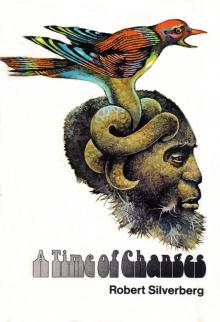 A Time of Changes
A Time of Changes This Way to the End Times: Classic Tales of the Apocalypse
This Way to the End Times: Classic Tales of the Apocalypse Beyond the Gate of Worlds
Beyond the Gate of Worlds Lord Valentine's Castle
Lord Valentine's Castle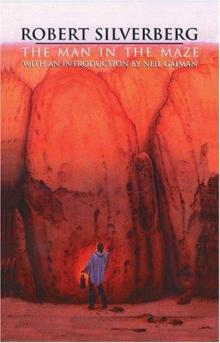 The Man in the Maze
The Man in the Maze Tales of Majipoor
Tales of Majipoor Time of the Great Freeze
Time of the Great Freeze The Collected Stories of Robert Silverberg, Volume 3: Something Wild Is Loose: 1969-72
The Collected Stories of Robert Silverberg, Volume 3: Something Wild Is Loose: 1969-72 Planet of Death
Planet of Death Trips: The Collected Stories of Robert Silverberg, Volume Four
Trips: The Collected Stories of Robert Silverberg, Volume Four In the Beginning: Tales From the Pulp Era
In the Beginning: Tales From the Pulp Era Hot Sky at Midnight
Hot Sky at Midnight Valentine Pontifex
Valentine Pontifex Up the Line
Up the Line Thorns
Thorns Amanda and the Alien
Amanda and the Alien Star of Gypsies
Star of Gypsies Nightwings
Nightwings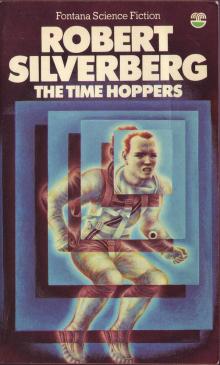 The Time Hoppers
The Time Hoppers Blood on the Mink
Blood on the Mink Dying Inside
Dying Inside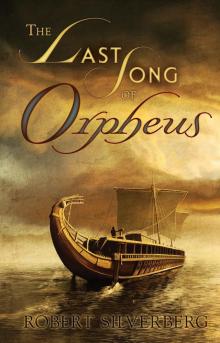 The Last Song of Orpheus
The Last Song of Orpheus The King of Dreams
The King of Dreams The Stochastic Man
The Stochastic Man The Collected Stories of Robert Silverberg, Volume Seven: We Are for the Dark
The Collected Stories of Robert Silverberg, Volume Seven: We Are for the Dark The Millennium Express: The Collected Stories of Robert Silverberg, Volume Nine
The Millennium Express: The Collected Stories of Robert Silverberg, Volume Nine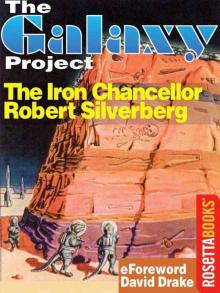 The Iron Chancellor
The Iron Chancellor Lord Prestimion
Lord Prestimion To Open the Sky
To Open the Sky The World Inside
The World Inside Chains of the Sea
Chains of the Sea The Collected Stories of Robert Silverberg, Volume Five: The Palace at Midnight
The Collected Stories of Robert Silverberg, Volume Five: The Palace at Midnight Postmark Ganymede
Postmark Ganymede The Second Trip
The Second Trip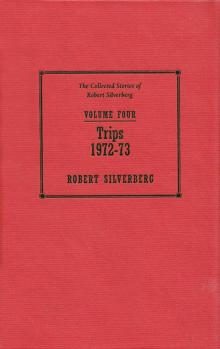 The Collected Stories of Robert Silverberg, Volume 4: Trips: 1972-73
The Collected Stories of Robert Silverberg, Volume 4: Trips: 1972-73 Son of Man
Son of Man Tom O'Bedlam
Tom O'Bedlam To the Land of the Living
To the Land of the Living To Be Continued: The Collected Stories of Robert Silverberg, Volume One
To Be Continued: The Collected Stories of Robert Silverberg, Volume One Shadrach in the Furnace
Shadrach in the Furnace The Chalice of Death: Three Novels of Mystery in Space
The Chalice of Death: Three Novels of Mystery in Space The Queen of Springtime
The Queen of Springtime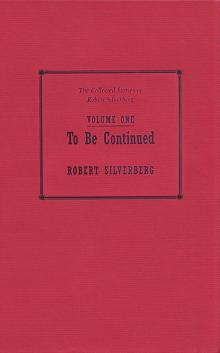 To Be Continued 1953-1958
To Be Continued 1953-1958 Legends
Legends Roma Eterna
Roma Eterna To Live Again
To Live Again At Winter's End
At Winter's End Needle in a Timestack
Needle in a Timestack To Live Again and the Second Trip: The Complete Novels
To Live Again and the Second Trip: The Complete Novels Lord of Darkness
Lord of Darkness The Mountains of Majipoor
The Mountains of Majipoor The World Outside
The World Outside The Alien Years
The Alien Years The Book of Skulls
The Book of Skulls The Face of the Waters
The Face of the Waters Gilgamesh the King
Gilgamesh the King The Collected Stories of Robert Silverberg, Volume 6: Multiples: 1983-87
The Collected Stories of Robert Silverberg, Volume 6: Multiples: 1983-87 The Happy Unfortunate
The Happy Unfortunate Three Survived
Three Survived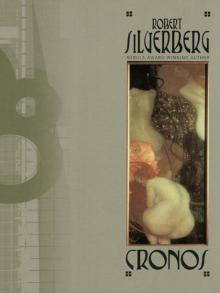 Cronos
Cronos Tower of Glass
Tower of Glass Legends II
Legends II The Planet Killers
The Planet Killers The Collected Stories of Robert Silverberg, Volume 2: To the Dark Star: 1962-69
The Collected Stories of Robert Silverberg, Volume 2: To the Dark Star: 1962-69 Downward to the Earth
Downward to the Earth Lord Valentine's Castle: Book One of the Majipoor Cycle
Lord Valentine's Castle: Book One of the Majipoor Cycle Hot Times in Magma City, 1990-95
Hot Times in Magma City, 1990-95 Hunt the Space-Witch! Seven Adventures in Time and Space
Hunt the Space-Witch! Seven Adventures in Time and Space Majipoor Chronicles
Majipoor Chronicles The Robert Silverberg Science Fiction Megapack(r)
The Robert Silverberg Science Fiction Megapack(r) Starman's Quest
Starman's Quest Car Sinister
Car Sinister Worlds of Maybe
Worlds of Maybe Fantasy The Best of 2001
Fantasy The Best of 2001 Revolt on Alpha C
Revolt on Alpha C Homefaring
Homefaring The Pardoner's Tale
The Pardoner's Tale Sailing to Byzantium - Six Novellas
Sailing to Byzantium - Six Novellas The Chalice of Death
The Chalice of Death Sundance
Sundance A Tip on a Turtle
A Tip on a Turtle Nebula Awards Showcase 2001: The Year's Best SF and Fantasy Chosen by the Science Fiction and Fantasy Writers of America
Nebula Awards Showcase 2001: The Year's Best SF and Fantasy Chosen by the Science Fiction and Fantasy Writers of America The Fangs of the Trees
The Fangs of the Trees The Palace at Midnight: The Collected Work of Robert Silverberg, Volume Five
The Palace at Midnight: The Collected Work of Robert Silverberg, Volume Five The Millennium Express - 1995-2009 - The Collected Stories of Robert Silverberg Volume Nine
The Millennium Express - 1995-2009 - The Collected Stories of Robert Silverberg Volume Nine Book of Skulls
Book of Skulls Passengers
Passengers Something Wild is Loose - 1969–72 - The Collected Stories of Robert Silverberg Volume Three
Something Wild is Loose - 1969–72 - The Collected Stories of Robert Silverberg Volume Three Multiples
Multiples Starborne
Starborne The Masks of Time
The Masks of Time The Mountains of Majipoor m-8
The Mountains of Majipoor m-8 Multiples (1983-87)
Multiples (1983-87) Those Who Watch
Those Who Watch In the Beginning
In the Beginning Earth Is The Strangest Planet
Earth Is The Strangest Planet Collision Course
Collision Course Neutral Planet
Neutral Planet To the Dark Star - 1962–69 - The Collected Stories of Robert Silverberg Volume Two
To the Dark Star - 1962–69 - The Collected Stories of Robert Silverberg Volume Two Mutants
Mutants Sailing to Byzantium
Sailing to Byzantium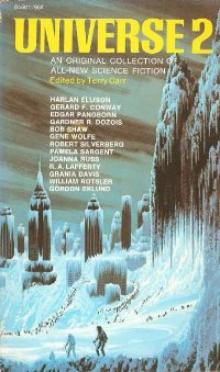 When We Went to See the End of the World
When We Went to See the End of the World Robert Silverberg The Science Fiction Hall Of Fame Volume One, 1929-1964
Robert Silverberg The Science Fiction Hall Of Fame Volume One, 1929-1964 To Be Continued - 1953–58 - The Collected Stories of Robert Silverberg Volume One
To Be Continued - 1953–58 - The Collected Stories of Robert Silverberg Volume One Valentine Pontifex m-3
Valentine Pontifex m-3 Gianni
Gianni Majipoor Chronicles m-2
Majipoor Chronicles m-2 We Are for the Dark (1987-90)
We Are for the Dark (1987-90) Waiting for the Earthquake
Waiting for the Earthquake Fantasy: The Best of 2001
Fantasy: The Best of 2001 How It Was When the Past Went Away
How It Was When the Past Went Away Beauty in the Night
Beauty in the Night The Man Who Never Forgot
The Man Who Never Forgot The Book of Changes m-9
The Book of Changes m-9 Lord Valentine's Castle m-1
Lord Valentine's Castle m-1 This Way to the End Times
This Way to the End Times Queen of Springtime
Queen of Springtime Legends-Volume 3 Stories by the Masters of Modern Fantasy
Legends-Volume 3 Stories by the Masters of Modern Fantasy The Palace at Midnight - 1980–82 - The Collected Stories of Robert Silverberg Volume Five
The Palace at Midnight - 1980–82 - The Collected Stories of Robert Silverberg Volume Five Something Wild is Loose: The Collected Stories of Robert Silverberg, Volume Three
Something Wild is Loose: The Collected Stories of Robert Silverberg, Volume Three Multiples - 1983–87 - The Collected Stories of Robert Silverberg Volume Six
Multiples - 1983–87 - The Collected Stories of Robert Silverberg Volume Six Alaree
Alaree Three Survived: A Science Fiction Novel
Three Survived: A Science Fiction Novel Defenders of the Frontier
Defenders of the Frontier The New Springtime
The New Springtime We Are for the Dark - 1987–90 - The Collected Stories of Robert Silverberg Volume Seven
We Are for the Dark - 1987–90 - The Collected Stories of Robert Silverberg Volume Seven The Science Fiction Hall of Fame, Volume One 1929-1964--The Greatest Science Fiction Stories of All Time Chosen by the Members of the Science Fiction Writers of America
The Science Fiction Hall of Fame, Volume One 1929-1964--The Greatest Science Fiction Stories of All Time Chosen by the Members of the Science Fiction Writers of America Master Of Life And Death
Master Of Life And Death Choke Chain
Choke Chain Sorcerers of Majipoor m-4
Sorcerers of Majipoor m-4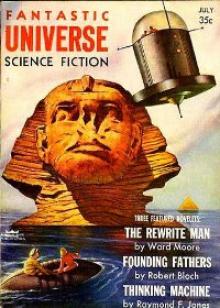 Absolutely Inflexible
Absolutely Inflexible Trips - 1962–73 - The Collected Stories of Robert Silverberg Volume Four
Trips - 1962–73 - The Collected Stories of Robert Silverberg Volume Four Hot Times in Magma City - 1990-95 - The Collected Stories of Robert Silverberg Volume Eight
Hot Times in Magma City - 1990-95 - The Collected Stories of Robert Silverberg Volume Eight Far Horizons
Far Horizons The Queen of Springtime ns-2
The Queen of Springtime ns-2 The Seventh Science Fiction Megapack
The Seventh Science Fiction Megapack Invaders From Earth
Invaders From Earth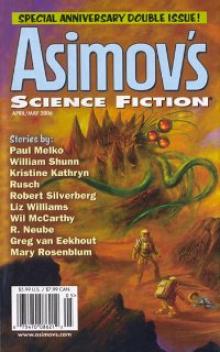 Hanosz Prime Goes To Old Earth
Hanosz Prime Goes To Old Earth The Macauley Circuit
The Macauley Circuit Science Fiction: The Best of 2001
Science Fiction: The Best of 2001 To the Dark Star: The Collected Stories of Robert Silverberg, Volume Two
To the Dark Star: The Collected Stories of Robert Silverberg, Volume Two Stochastic Man
Stochastic Man Legends: Stories By The Masters of Modern Fantasy
Legends: Stories By The Masters of Modern Fantasy To Live Again And The Second Trip
To Live Again And The Second Trip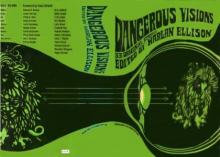 Flies
Flies The Silent Invaders
The Silent Invaders Ship-Sister, Star-Sister
Ship-Sister, Star-Sister